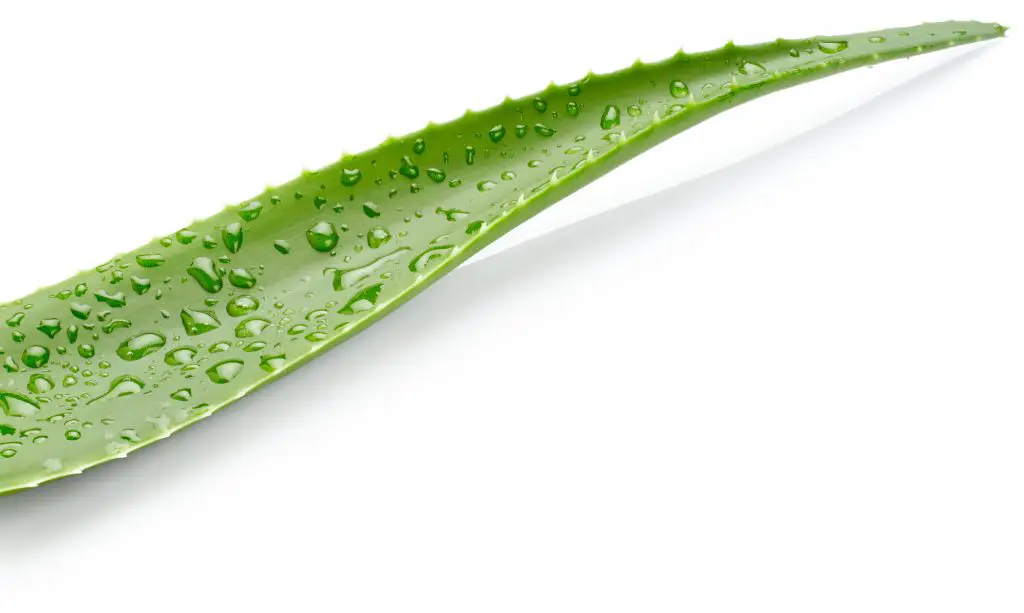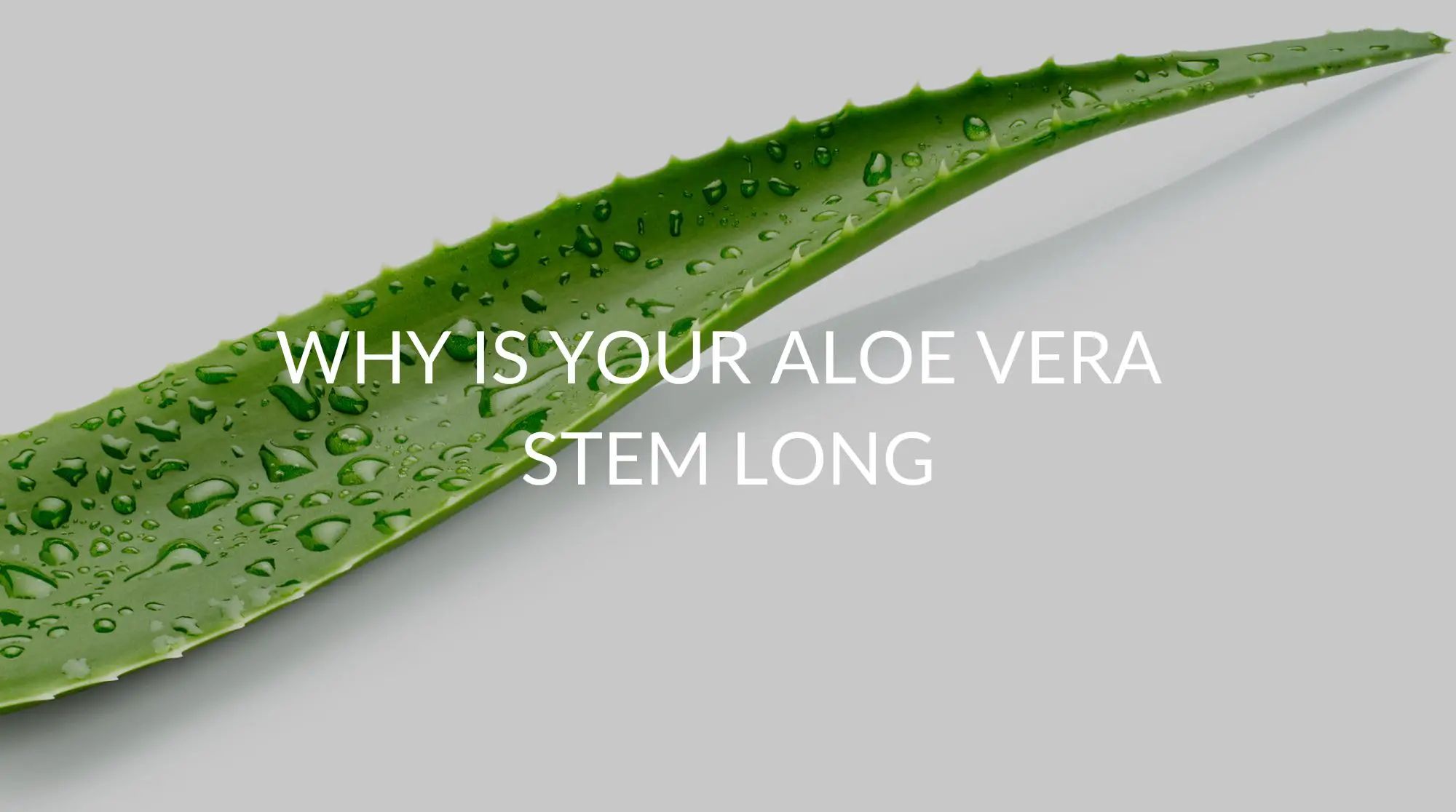Aloe Veras are beautiful green plants with triangular leaves. They have a unique, beautiful structure. Their color is simple and fits in both minimalist and colorful environments. The shape of these plants brings valuable geometry to a space. Similarly, the shape of the plant can suggest if there is something your plant needs.
One way you may notice if something is lacking in your plant’s care is the stem length. If the stem of your succulent gets exceptionally long, you may need to adjust how you care for it.
Keep reading to find out common causes for a long stem as well as steps you can take to return your beautiful succulent plant to its natural form.
Why is Your Aloe Vera Stem Long?
There are several reasons your Aloe may have grown a long stem. Many nurseries and botanists refer to Aloe Vera plants with long stems as “leggy.”
There are solutions that will work for multiple of these reasons, so, luckily, you will have plenty of options to help your plant stay happy and healthy. However, it is important to understand why your succulent has grown too long so you can prevent it from happening again.
It Has Too Much Water
You probably know about Aloe Vera plants, which are famous for the gel that fills their leaves. Yes, this is the gel you can use on sunburns. This gel lets the Aloe Vera store water for times when it is not raining. Overwatering can result in overgrowing as your plant grows more leaves to try and store the extra water.
Making sure to properly water your succulents is one of the greatest things to help them grow healthily. Aloe Vera is used to growing in desert climates. Most succulents (which Aloe Vera is considered) grow in very dry areas.
The stem will grow longer and fill up to help manage all of the water you are giving it. Keep in mind that you will really only need to water plants in the succulent family every two to three weeks.
It Does Not Have Enough Light
Aloe Vera plants love the sun. They are used to environments that provide plenty of sun for many hours throughout the day. Without enough light, it may start growing and reaching from its stem in an attempt to get more light.
This is especially common for Aloe Vera plants that live inside your home, so consider this if your indoor Aloe Vera plant has grown a long stem.
The Leaves are Too Heavy
The stem is designed to support the weight of your Aloe plant. If the leaves are overgrown and heavy due to extra water or a lack of trimming, the stem may grow as your plant attempts to gain more support for your leaves.

The Pot is Too Shallow
If your Aloe Vera is happy and healthy, it may grow bigger. This growth may make the stem stick out and protrude above the edge of the pot. This is a very easy fix, as the stem likely has not grown too long by this point.
You can solve this problem by simply repotting your Aloe Vera plant in a deeper pot.
You Are Not Using the Right Soil
In general, Aloe Vera plants are not very picky about the soil they need. However, the wrong soil can make your plant grow differently than you expect it to. If the soil has too many nutrients or not enough, your Aloe Vera plant may start growing in a funny shape, including a long stem.
The Plant is Naturally Leggy
It is entirely possible that your plant is simply naturally leggy. Just as people come in a variety of shapes and sizes and carry their weight differently, plants can naturally grow differently.
If your Aloe Vera plant is naturally leggy, you will likely not be surprised by the length of the stem because it will have already grown like that in the past.
You can trim your Aloe Vera to help keep the length of a naturally leggy plant in check.
Here are the reasons why the tips of your Aloe plant are drying out
How Can You Fix Long Stem Aloe Vera?
If your Aloe Vera has become leggy, there are several things you can do to help your Aloe Vera return to its natural shape and health. Understanding the underlying cause of the long stem is important for helping prevent the problem in the future again.
In the meantime, these are the things you can do to help fix your Aloe Vera plant.
Repot Your Aloe Vera
One of the easiest ways you can help your Aloe Vera plant with a long stem is by repotting it. You will know you need to do this, especially if your Aloe Vera plant has started to tip over with its long stem.
After repotting your Aloe Vera plant, let it adjust to the pot before adding water.
Trim the Stem that is Too Long
Pruning and trimming the stem that is too long can easily help reshape your Aloe Vera plant. If you are not sure what has made your plant leggy, you will want to figure that out to prevent it from happening again. In the meantime, pruning can help mitigate the problem.
If your Aloe Vera plant is naturally leggy, you will want to know how to easily trim the excess length.
It is easiest to trim the stem that is too long by removing it from the pot. Then, you can trim the roots that have grown too long to help return them to their normal size.
Then, repot your plant. You can return it to the old pot or place it in a new one. Just as we did when repotting the plant into a deeper plant, you will want to wait before watering the plant to let it adjust to the new pot. A waiting period of a few days should be plenty.
Regularly pruning your Aloe Vera plant to remove dead stalks can also be a valuable preventative measure.
Add More Light to the Environment
If your succulent has become longer as it tries to grow towards the light, you will want to add more light to the environment. Aloes do this when they are reaching for the sun. This added light will encourage your Aloe Vera plant to stay at its natural height.
Try moving your plant to somewhere in your house with more light. You can also try adding a grow light. In general, though, natural sunlight is best for Aloe Vera plants whenever possible. You may even consider moving the pot outside if the weather would be conducive for that without overwatering your Aloe Vera.
Reduce the Amount You Are Watering
Aloe Vera plants will become leggy if they are overwatered. They grow longer to try and store all of the water you are giving them. If you want to treat an Aloe Vera plant with a long stem, you will want to make sure you are not overwatering it.
Aloe Vera plants are used to desert climates. That means they only need to be watered every two to three weeks. If you notice your plant is taller than is natural, try adding a week between watering days and see if it fares better.
Remove the Lower Portion
Aloe Vera plants grow in spirals. They will look like circles stacked on top of each other. If your Aloe Vera plant has grown stems that are too long, you can remove one layer of the plant.
Simply separate the lower layer from the plant and repot the upper layer of the plant.
How To Repot An Aloe Vera Plant with Long Stems?
If you have decided that you would like to repot your Aloe Vera plant to help it return to its natural shape, the process is relatively easy.
1. Remove the plant from the pot. Be gentle with the plant and be careful not to break the stem. It may be fragile and more prone to bend in certain places.
2. Remove the soil from the previous pot.
3. Place the soil on the new, larger pot.
4. Trim the roots of your Aloe Vera plant. You do not want to trim them too much, but a slight trim can help stop the lengthy growth of the stem.
5. Place the Aloe Vera plant in the new pot. Make sure it has enough soil. Since it is now in a larger pot, you may need more soil to support your Aloe Vera.
6. Wait a few days before watering your Aloe Vera plant. Waiting a few days will help prevent overwatering, and it will give your plant time to adjust to the new pot.
How Do You Shorten Aloe Vera Stems?
Pruning or trimming your Aloe Vera stems can help you treat a plant that is growing too tall or unmanageable. As long as you do it right, it is safe and will not hurt the plant.
To shorten your Aloe Vera stems, you will:
1. Find the oldest leaves. Aloe Vera plants grow in spirals. The older leaves are on the outside, and the newer leaves are on the inner circles. Taking off only the oldest, most dead leaves will help make sure you are not taking away water or nutrients from the fresh leaves.
2. Trim the oldest leaves. You can think of splitting your Aloe Vera plant into an outer ring and an inner ring. You can cut away most of the outer ring, and it will shorten the stems of your Aloe Vera.
3. Trim any dead leaves. Dead leaves may not just be on that outer ring. You will want to trim dead leaves no matter where they are on the plant.
4. Remove the plant from its pot.
5. Trim the roots. Do not become overzealous, but trimming the edges of the roots can help shorten the stem of your Aloe Vera plant.
FAQ
What Can I Do if my Aloe Vera Plant Has Grown Too Tall?
If your Aloe Vera plant is too tall, you can do several things to take care of it. You can trim the stems, repot the plant, or adjust the growing environment.
How Do You Know When You Should Repot Your Aloe Vera Plant?
You will need to repot an aloe plant when it is sticking above the pot or if the roots are filling the pot. If your Aloe Vera plant has become long and “leggy,” it may also benefit from repotting.
Recap
There are several things that can make your Aloe Vera plant grow long stems. It could be due to insufficient light or overwatering. Your plant may need a bigger pot. If your Aloe Vera plant has grown too long, you can adjust the light and water to prevent further lengthy growth, and you can trim away dead or too long stems to help return it to its natural shape.

